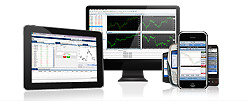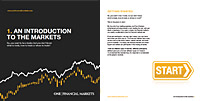

Oil ends mixed as bulls cling to China amid stinging U.S. inflation
By Barani Krishnan
The long side of the oil trade isn’t throwing in the towel despite more stinging U.S. inflation data and hawkish talk by the Fed on Thursday that came on top of soaring oil stockpiles.
The dollar's surge to a six-week peak against a basket of currencies was also weathered by oil bulls despite the higher costs it brought to those buying crude to support it from the lows.
New York-traded West Texas Intermediate, or WTI, crude for March settled down just 10 cents, or 0.1%, at $78.49 per barrel, recovering from a session low of $77.92.
London-traded Brent crude for March delivery actually closed higher, settling up 24 cents, or 0.3%, at $85.15. The intraday bottom for Brent was $83.88.
Crude prices treaded water for a second day in a row as bulls in the space tried to push the market into higher territory on projected demand from China, the world’s largest oil importer.
“It is going to be hard for oil to break out here until we see clear signs that China’s reopening is reaching the next level,” said Ed Moya, analyst at online trading platform OANDA.
Chinese buying has always been a trigger for oil rallies, with the mood heightened now by forecasts from the Paris-based International Energy Agency. The so-called IEA, which looks after the interest of oil-consuming nations and is typically bearish on crude prices, had issued positive forecasts of late for energy demand.
China is likely to buy an additional 500,000 barrels per day this year, accounting for almost half of the 2023 global oil demand growth this year, following an end to COVID-19 curbs that had strongly curbed energy usage in the country, the IEA said on Wednesday.
The forecast helped oil bulls fend off data showing crude stockpiles rose by 16.283 million barrels during the week ended Feb. 10 — an eighth straight weekly rise that brought stockpiles to nearly 51M barrels for this year.
That sentiment continued on Thursday after the {ecl-734||Producer Price Index}}, which monitors US wholesale prices and serves as a key determinant of inflation, rose its most in seven months in January, complicating the Fed’s job of keeping a lid on price growth.
The so-called PPI reading itself came two days after the broader Consumer Price Index, or CPI, report for January, which also showed stickier-than-expected inflation in the United States.
The data prodded the Federal Reserve’s regional head for Cleveland, Loretta Mester, to say that U.S. interest rates need to rise to above 5% and remain there an extended time in order to bring inflation down meaningfully.
“How far the Fed goes above 5% depends on data,” Mester, who is president and chief executive at the Federal Reserve Bank of Cleveland, said in a live-streamed speech. “Upside risks to inflation remain in place.”
The Fed added 450 basis points to rates since March via eight hikes, in its bid to control runaway inflation. Rates currently stand at a peak of 4.75%. The central bank’s last rate revision was on February 1 and its next is due on March 22.
Begin trading today! Create an account by completing our form
Privacy Notice
At One Financial Markets we are committed to safeguarding your privacy.
Please see our Privacy Policy for details about what information is collected from you and why it is collected. We do not sell your information or use it other than as described in the Policy.
Please note that it is in our legitimate business interest to send you certain marketing emails from time to time. However, if you would prefer not to receive these you can opt-out by ticking the box below.
Alternatively, you can use the unsubscribe link at the bottom of the Demo account confirmation email or any subsequent emails we send.
By completing the form and downloading the platform you agree with the use of your personal information as detailed in the Policy.






